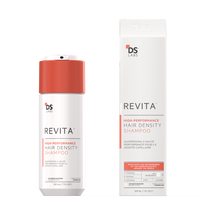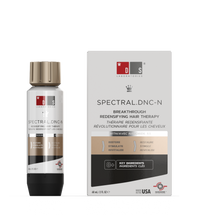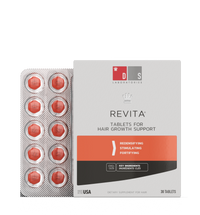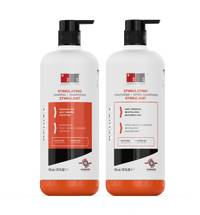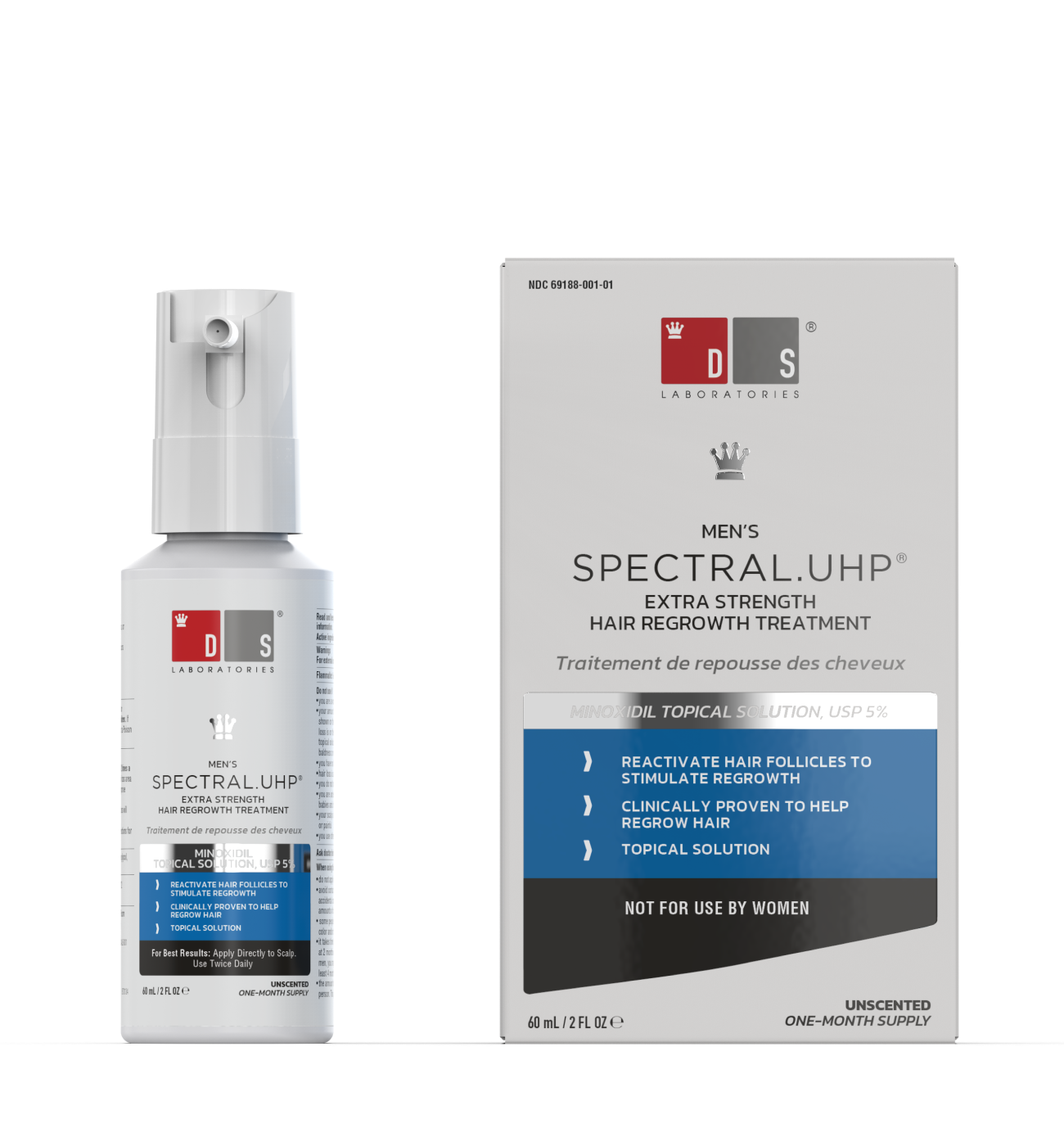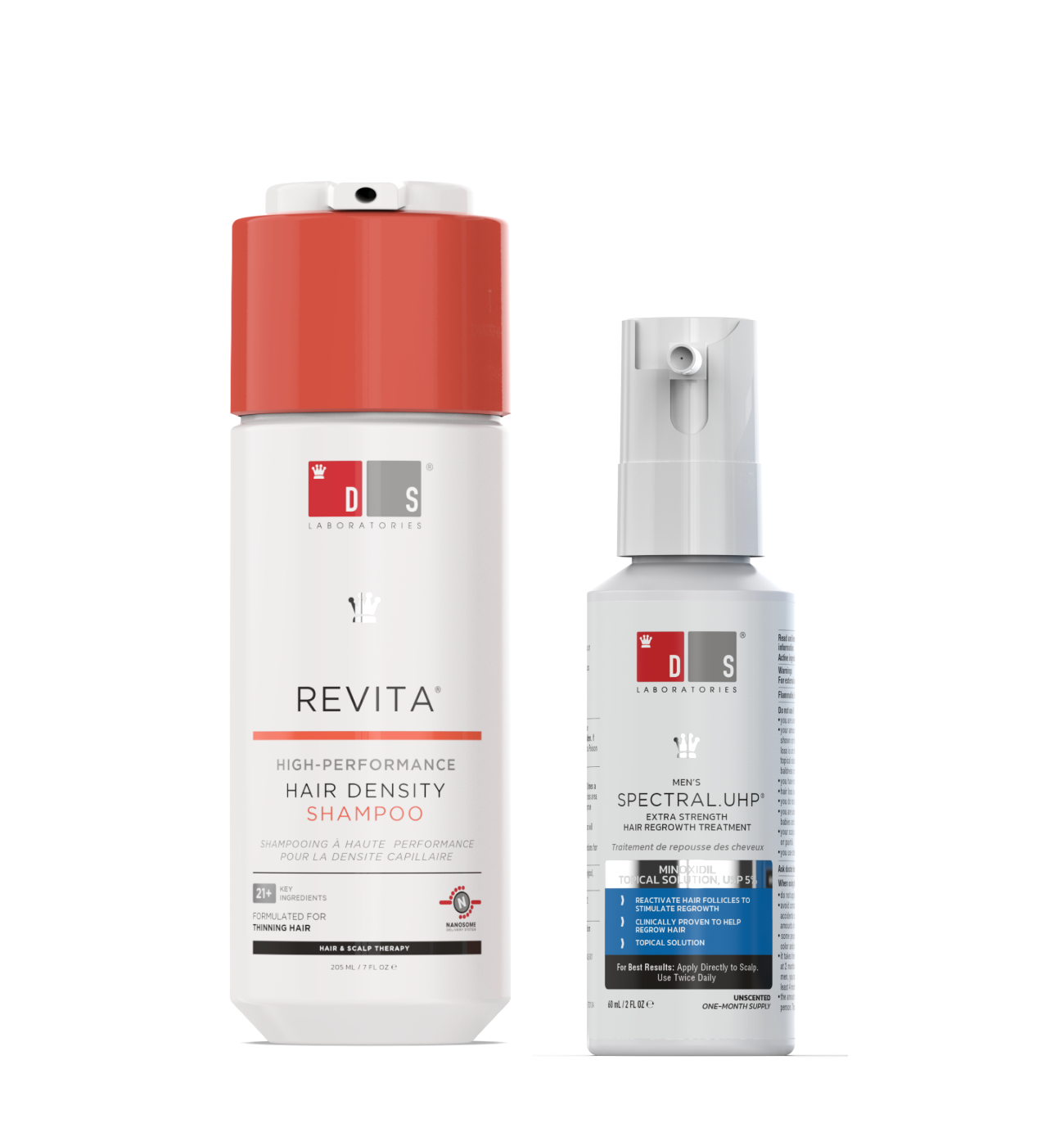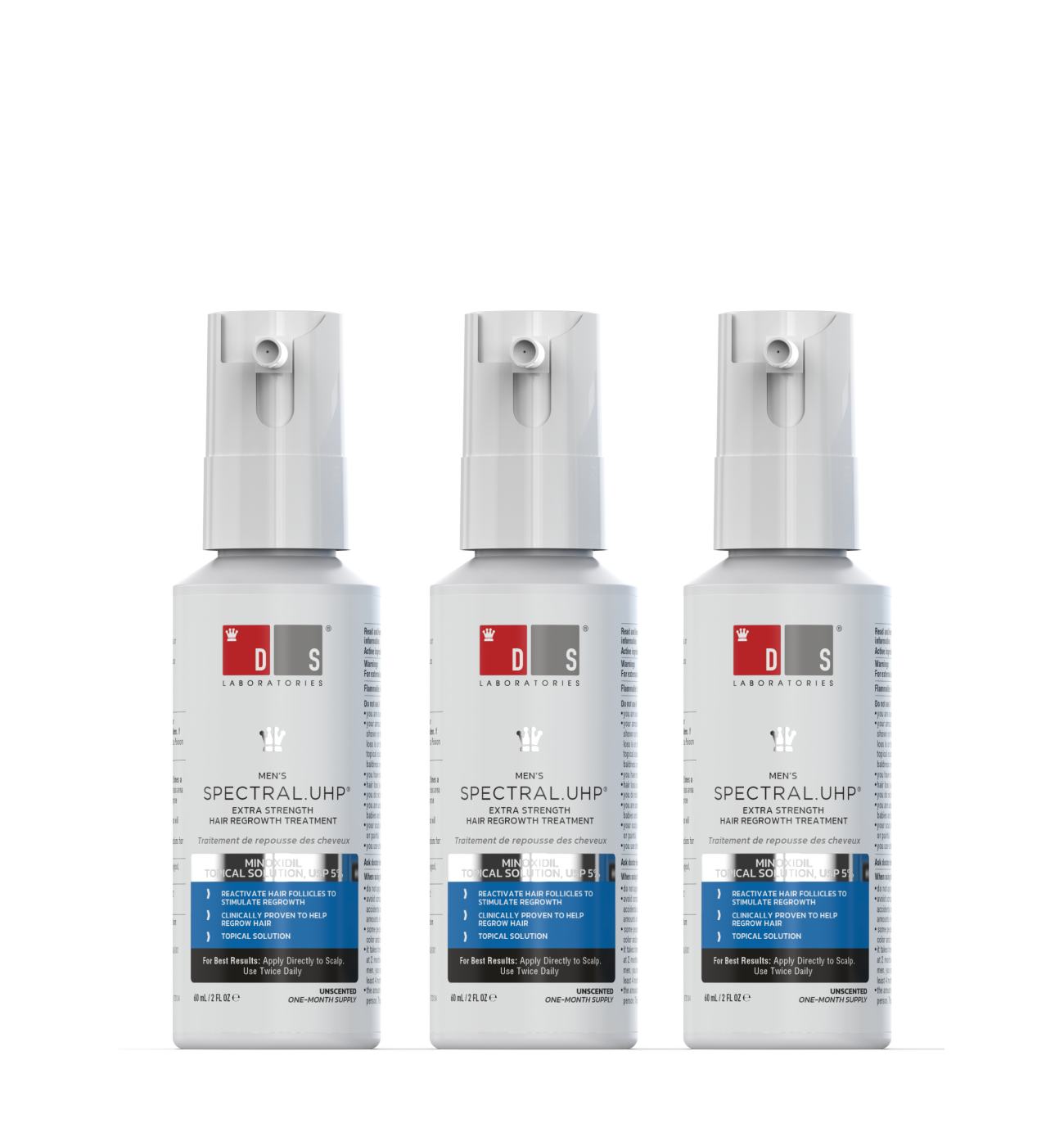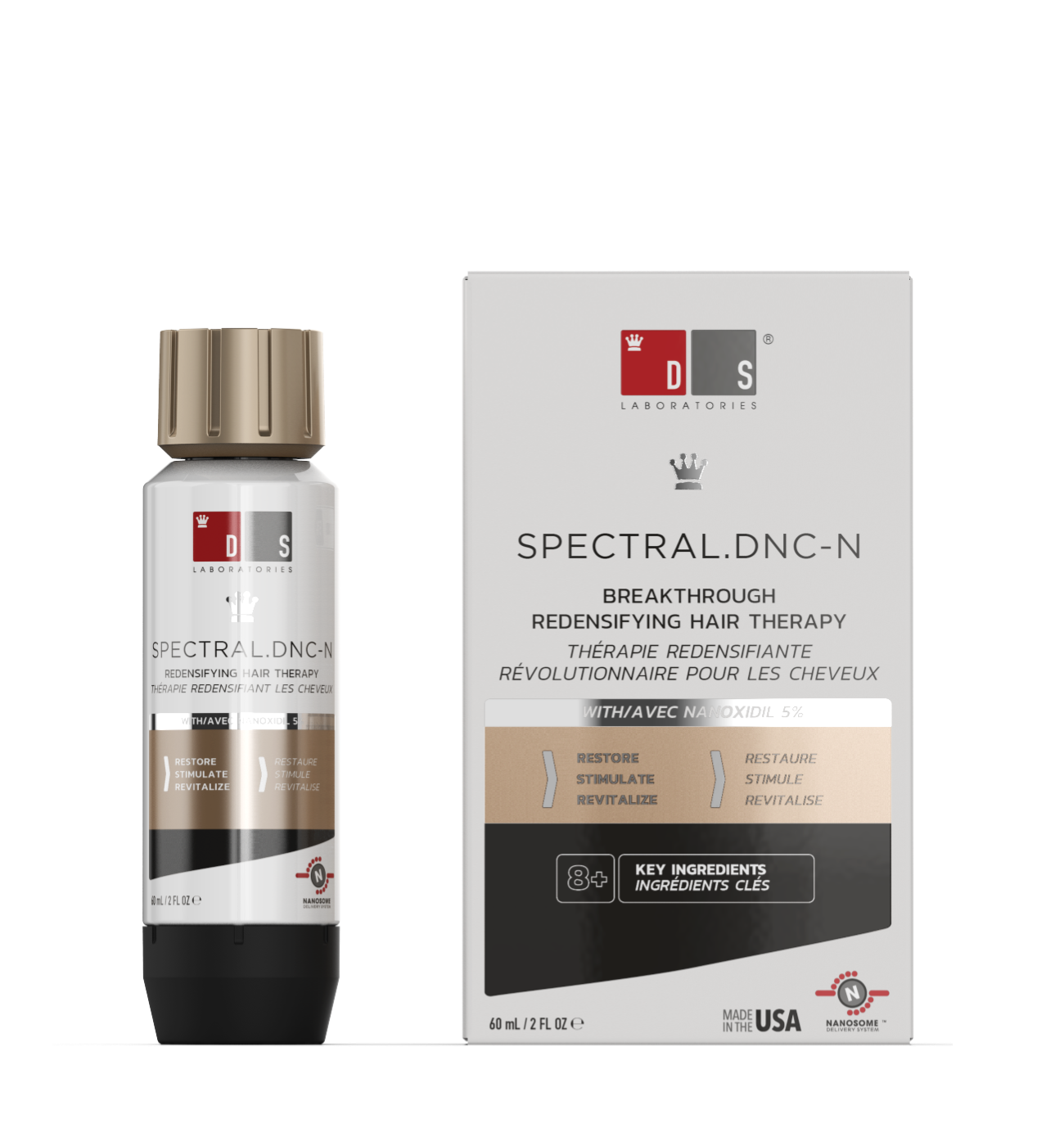If you’re a woman facing androgenetic alopecia, you’ll find that its hair loss treatments clearly aren’t designed with the female population in mind. This can be frustrating as you struggle to find ways to address your hair loss.
Fortunately, there’s a tried-and-tested treatment option that might help: minoxidil.
Minoxidil, also known by its brand name Rogaine, is an FDA-approved medication that can help you grow new hair whether you’re a man or a woman.
How Does Minoxidil Work? Can It Help You Treat Hair Loss?
Minoxidil works as a vasodilator. It also prolongs the anagen phase of the hair cycle and shortens the telogen phase to help you keep your natural hair for longer.
It is only effective in the treatment of hair loss due to androgenetic alopecia — provided you’re in the early stages of genetically caused hair loss. For some, it can make things worse before there are visible improvements. So, you might notice more falling strands during the first 3 to 7 weeks of treatment.
But don’t worry because this is often temporary. Not only are you likely to regain the hair you’ve lost over time, but any new hair growth will be thicker and stronger.
What Type of Minoxidil Should You Use?
Minoxidil comes in different formulations: topical foam and lotion. It’s also available in different strengths: 2% and 5%. Women are advised to use the low-strength minoxidil (2%) while men can use its high-strength alternative (5%).
Does that mean women can’t use 5% minoxidil? Not really.
The FDA has approved the use of 5% minoxidil in foam form for women, but the jury is still out on the 5% minoxidil solution. You can still apply it to treat severe forms of hair loss like androgenetic alopecia but it will be considered off-label use.
Can a Woman Use 5% Minoxidil for Men?
A 2011 study showed that women who used 5% minoxidil foam had better benefits in the overall efficacy of the treatment than those who used the 2% minoxidil solution.
So, if your hair is rapidly falling out, your dermatologist may recommend that you use the 5% formulation. Despite what it says on the packaging, it can work on the entire scalp so you might want to go ahead and use it over all the thinning areas for a more comprehensive treatment.
Its effectiveness might have something to do with one ingredient — propylene glycol. Propylene glycol helps minoxidil penetrate more deeply into the scalp. It isn’t present in minoxidil’s other forms, making the 5% minoxidil solution more effective than the 2% formulation.
It sounds like a magic solution, but there are some precautions to keep in mind.
5% minoxidil tends to be high strength. Therefore, you should follow the instructions on the label and limit its application to once daily. It will be nearly as effective as other low-strength versions of the FDA-approved hair loss treatment.
Additionally, because it uses alcohol as a base, it can irritate your skin, cause flaking, and be more difficult for some individuals to tolerate. If you experience a burning sensation, redness, and irritation that doesn’t go away, switch to 5% minoxidil foam or 2% minoxidil solution to avoid further complications.
Know that 5% minoxidil might also cause unwanted hair growth in the facial area. Hence, it is advised that you wash your hands after applying the solution to your scalp so you don’t touch your face unknowingly and create new problems.
These risk factors tend to be lower among women who use the FDA-approved dosage and strength to target hair loss, i.e. 2% minoxidil as a topical foam or solution.
To Use or Not to Use: That Is the Question
Familiarizing one’s self with the pros and cons is not enough to make a medical decision — especially when it comes to hair loss. Hair loss could be caused by a range of factors, including lifestyle, environmental pollution, diet, thyroid, and genetics.
Something to remember: Minoxidil is a mild treatment for women facing early-stage androgenetic alopecia. It is a growth stimulant, meaning it will only work on the follicle growth receptors and will not target the actual problem.
Knowing the root cause of your hair loss is essential to predict the outcome of certain treatments; otherwise, you’re just delaying your hair loss by using minoxidil.
Hence, we recommend that you speak with a medical practitioner before starting treatment. They’ll assess your medical history, run tests, and present you with treatment options that will help you get the results you want.
Word to the Wise: Avoid Minoxidil if You’re Pregnant
Minoxidil is considered a category C danger to pregnant and breastfeeding women since it can cause malformations in the baby. More research is needed to solidify this finding, but it would be wise to err on the side of caution and explore other treatment options if you’re pregnant, planning to get pregnant, or nursing.
Wrapping Up
Women can use 5% minoxidil for men but they should be aware that it might cause side effects.
Alternative treatments to consider include microneedling, hair transplants, platelet-rich plasma therapy, finasteride (also known by the brand name Propecia), and red-light therapy.
However, if you’re experiencing hair loss, the best thing to do is to visit an appropriate medical professional first before starting any treatment.

